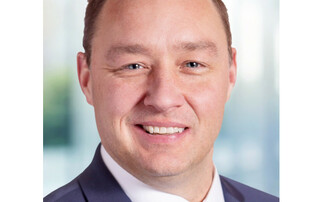Vsevolod Vayner, G-Core Labs Cloud Platforms Department Head reveals five scenarios for using the cloud to solve the challenges of medicine and healthcare, illustrated by case studies
According to the IDC, healthcare is the leading industry in terms of spending on cloud solutions. Cloud solutions are becoming the basis for services for storing, exchanging and processing medical data. They offer a wide range of options, from providing remote doctor—patient interaction to creating full-fledged digital ecosystems based on smart health monitoring devices.
Let's consider 5 promising use cases for cloud solutions in healthcare.
1.Telemedicine
Telemedicine is a convenient alternative to in-person doctor visits by providing patients with high-quality medical care remotely.
The obvious benefits of telemedicine include:
-
remote doctor consultations;
-
quick first aid;
-
convenient access to medical data stored in a secure cloud for both the doctor and patient;
-
quality healthcare in remote areas.
-
Innovative telemedicine platform. We provided our own cloud infrastructure to an innovative telemedicine platform that has recently been launched in several Luxembourg healthcare facilities simultaneously.
The platform gives patients easy access to telemedicine without the need to submit an application. The digital ecosystem also provides HD online communication with the doctor. Furthermore, the secure exchange of documents enables remote work with patient medical records, test results and prescriptions.
For medical centers participating in the project, it was especially important that the servers for the telemedicine platform be located in a highly reliable data center in the country, which we ensured as well.
Learn more one this project here.
2. Digitalization of medicine
Centralized data storage
In advanced healthcare systems and medical centers, patient data is collected in electronic medical records based on centralized object storage.
This solution ensures reliable protection of confidential health information and allows for archiving large amounts of data accumulated in a healthcare facility. The provision of such cloud storage is one of our main areas of development.
Electronic medical records operating at the federal and regional levels are not tied to a specific clinic, which is most convenient for patients. According to the U.S. Department of Health and Human Services, more than 95% of the country's inpatient facilities are equipped with them.
Transferring medical records to clouds
Electronic medical record service providers are gradually moving their solutions to public clouds, with Cerner and Meditech having announced this in 2019. Market participants are shifting to a more flexible model of interaction with healthcare facilities by providing electronic medical records as a service.
As a result, clinics are able to:
-
select the necessary options and pay only for resources actually used courtesy of the pay-as-you-go model typical for public clouds;
-
reduce the load on their own IT infrastructure;
-
delegate cybersecurity to a cloud provider.
Introducing artificial intelligence
In the future, a public cloud will allow the introduction of artificial intelligence for the purposes of processing data from electronic medical records. This will ensure a personalized approach to patient treatment and, consequently, improve the accuracy of diagnosis and quality of treatment.
Improved diagnosis
Cloud services are also used in specialized areas of medicine. According to the American Medical Association, about 35% of misdiagnoses are the result of limited access for specialists to medical images, data and records. In the United States, for radiologists, the problem is addressed with a cloud solution that combines the results of studies carried out using more than 500 000 units of medical imaging equipment (for example, CT scans and X-rays) into a single portal.
3D images are processed in a flexible public cloud computing environment. Doctors are provided access to medical data on any convenient electronic device (computer, tablet, smartphone) without being tied to the workplace.
3. Biobanks and working with Big Data
The formation of national and international biobanks will facilitate research in the field of various biomedical sciences, including cardiology, oncology and endocrinology. The most promising research projects are also based on the use of artificial intelligence (AI) technologies.
The biobank of the American medical center UCLA Health combines structured and unstructured data in a public cloud, including:
-
results of laboratory and genetic tests;
-
medical images;
-
documentation.
The solution is based on a scalable, high-performance cloud computing environment with built-in artificial intelligence. Analyzing data using machine learning algorithms significantly reduces research time. Processes that used to take months now take just a few days.
Prospects of AI platforms
The formation of a single biobank within the healthcare system requires special tools and methods. Big Data services combine medical information collected from many sources. For example, the centralized storage of large amounts of unstructured data is provided today using the Data Lake method.
The G-Core Labs cloud infrastructure also allows the deployment of the most demanding applications and services for working with Big Data.
4. Artificial intelligence
Cloud-based AI applications are in demand in:
-
diagnoses of diseases, including cancer;
-
predictive analytics that determine in advance the risks of developing and spreading diseases;
-
analysis of medical images (X-rays, ECGs, and EEGs);
-
genetic research.
The advantage of using such applications is a noticeably higher accuracy of diagnostic results compared to the conclusions made by doctors themselves.
Cardiology neural network training
In November 2019, the American Heart Association presented the results of analyzing ECG data using artificial intelligence in order to proactively identify patients at risk of developing life-threatening arrhythmia. The neural network was trained using more than 2 million ECG images from the archives of the Geisinger Health System (a network of medical centers in the states of Pennsylvania and New Jersey).
The image analysis was carried out in 15 segments consisting of 30 thousand points each.
As a result of the study, a model was created to predict the risk of a patient's death within a year based on the results of an ECG that, in the opinion of cardiologists, had no pathological signs.
DNA analysis
At the Massachusetts Institute of Technology (MIT), artificial intelligence analyzes lab-engineered DNA sequences and identifies their origins. The advantages of this technology are high-speed data processing and reliable results. The MIT neural network outperforms BLAST, the most common DNA sequence comparison technique, in terms of accuracy.
The G-Core Labs AI platform also enables developers and data scientists to quickly build, train and deploy machine learning models. This product is also suitable for creating specialized solutions in the field of healthcare.
5. The internet of medical things
The next stage in healthcare development is the creation of a digital ecosystem based on smart medical devices. Collecting information about the patient's health status in real time allows doctors to quickly diagnose the disease and prescribe treatment.
Remote monitoring
The Israeli startup Bio-T uses a public cloud to create an Internet of Medical Things platform. Smart remote health monitoring devices track one's heart rate, blood pressure, respiratory rate, and other vital signs.
The data transfer to the cloud allows doctors in real time to:
-
monitor the patient's compliance with prescribed treatment;
-
monitor changes in vital signs;
-
make informed decisions to adjust the course of treatment.
The digital health system unites patients, medical professionals, administrative and technical staff of healthcare facilities and representatives of insurance companies. In addition to the data collected by smart remote monitoring devices, the results of patient surveys and information about payment for services are stored and processed in the cloud.
Clinical trials
A new approach to organizing clinical trials based on a public cloud is being implemented by the Swiss company Ypsomed, which specializes in injection therapy. As their condition is monitored remotely, research participants don't need to be in a hospital.
The digital platform provides:
-
connection of smart devices to the cloud;
-
ability to manage their work from a distance;
-
data storage;
-
deployment of monitoring and analytics services in selected regions around the world.
The self-administration of drugs by participants in clinical trials, as well as remote access to data for researchers and pharmaceutical companies, is organized thanks to the Smart Pilot injection device. According to the developers, the solution complies with health regulations and meets privacy and security requirements.
G-Core Labs cloud services are ready for use in healthcare. They are easy to connect and will allow you to optimize, simplify and speed up your healthcare infrastructure.
A few words on G-Core Labs cloud
G-Core Labs Cloud is a multifunctional data center that is available at any time from anywhere in the world and allows you to deploy unlimited virtual resources in just a few clicks, without leaving your home or office and without buying the expensive necessary equipment. With the help of G-Core Labs Cloud, any business will be able to speed up its development, testing, and launching processes several-fold, and with the minimum infrastructure costs.
Our cloud services are powered by Intel Xeon Gold 6152, 6252 and 5220 processors, have up to 1 TB of RAM and SSDs and HDDs with triple replication.
The G-Core Labs cloud is based in Luxembourg, Ashburn (USA), Amsterdam, Singapore, Moscow & Khabarovsk; Frankfurt, Sidney and São Paolo are to follow.




















